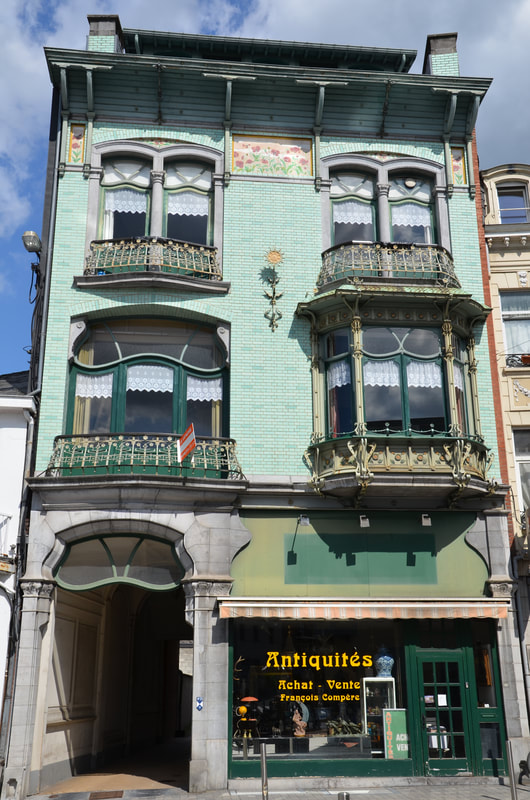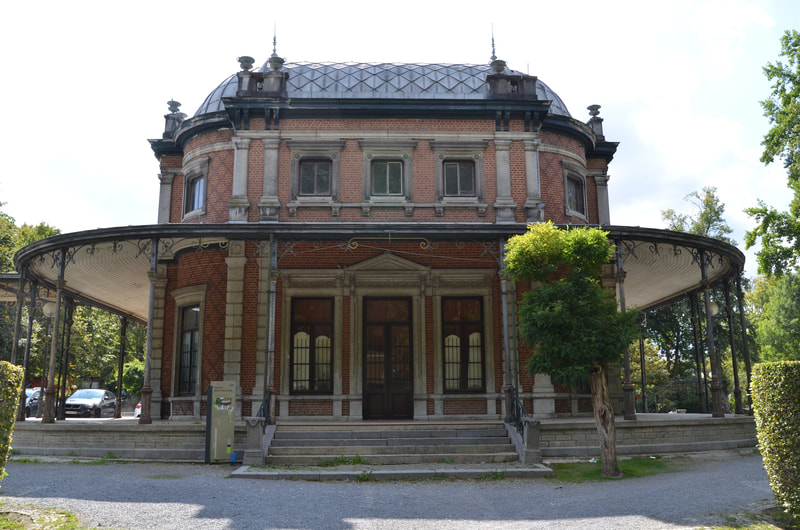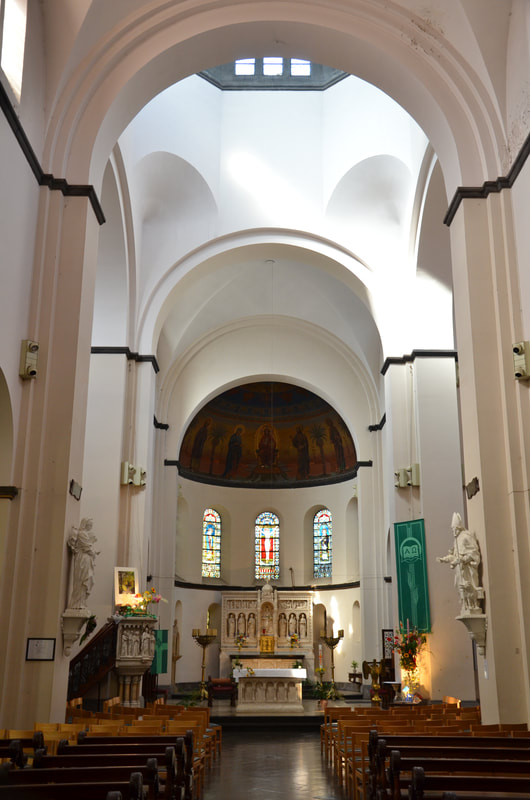Spa
The city in the province of Liege located in the charming valley, which is part of the Arden, is one of the most popular tourist destinations in Belgium. Being a candidate to be included in the UNESCO World Heritage List, Spa is part of the European cultural route of historic thermal cities. The city is famous for its great thermal facilities, many natural mineral springs and SPA mineral water, exported all over the world, and the nearby village of Francorchamps houses the Circuit de Spa-Francorchamps, which hosts the annual Belgian F1 Grand Prix.
The beginnings of the resort, called the Pearl of the Arden, came after the publication of the book on the healing properties of the Spa sources, written by Lymborth, Bishop of Liege. The apogee of the resort's popularity was in the 17th and 18th centuries. At that time, well-known writers, aristocrats, statesmen and monarchs came here. The spa became the center of the civilized world, as Emperor Joseph II said, the Cafe of Europe. In 1717 the spa was visited by Tsar of Russia Peter the Great, and the news about the relief of his diseased liver quickly spread throughout Europe, bringing the Spa great publicity. In 1763 a casino was built for distinguished guests.
Pouhon pierre le grand |
vertical divider
This is one of the most representative buildings in the city. It was created in 1880 year, based on the design of the Brussels architect Viktor Besme. The building consists of an octagonal pavilion, covering the main source in the Spa, from which flows naturally sparkling water, containing a lot of salt and rich in iron.
|
W 2012 roku budynek przeszedł kompletną renowację, według projektu architekta Leo Haesbroecka. Współcześnie mieści się tu biuro informacji turystycznej. W budynku można również podziwiać Livre d'Or de Spa, obraz artysty Antoine Fontaine. Na dziewięciometrowym płótnie przedstawił on 92 sławne postacie, które wizytowały Spa.
Maison Charlier to budynek będący najlepszym przykładem stylu secesyjnego w Spa. Wybudowano go w roku 1902, według planów architekta Gustawa Charliera, dla przemysłowca z Liege Wiktora Collarda. W 1988 roku budynek wpisano na listę zabytków.
Maison Charlier to budynek będący najlepszym przykładem stylu secesyjnego w Spa. Wybudowano go w roku 1902, według planów architekta Gustawa Charliera, dla przemysłowca z Liege Wiktora Collarda. W 1988 roku budynek wpisano na listę zabytków.
Town hall
The building, built in the style of Louis XVI, in the years 1762-1768, initially housed a hotel, which was then renamed to a fabric factory. In the early nineteenth century, bought by William Cockerill became a private home. Later, a school operated here, and the town hall has been here since 1941. Opposite the main entrance is Perron de Spa, which is a symbol of independence given to the city by the prince Bishop Liege in 1594 a year.
Pouhon Prince de Condé
The underground source discovered in 1863 a year by pharmacist Schaltin is distinguished by a high content of minerals obtained during the final part of the underground journey. The original building in which the source is located dates from the 19th century. Art exhibitions take place there throughout the year. The glass pyramid adjacent to the building was built in 1988 year, according to the design of architect Marcel Geenen.
Casino Spa
La Redoute de Spa, one of the first casinos in the world, was founded in 1763 year. According to regulars at the time, it was the prettiest and best maintained casino in Europe. It had a ballroom, theater and games room. After several fires and government bans on games from 1872 and 1902, the casino began to experience worse days. The old Redoute Casino has been replaced by a new building, built in the years 1905-1908 by architect Alban Chambon. In 1908 a new ballroom and Kursaal hall were created.
Former terma
Near the casino there is a historic building designed by Leon Suys. In the years 1868-2004, city baths were located here. The building with an eclectic style has a wonderful entrance hall. The building's equipment at that time was so luxurious and innovative that it was copied by many European thermal centers. Today, the thermal baths have been moved to a modern resort built on the Annette and Lubin hill.
To the resort, which was designed by the architect from Liege Claude Strebelle, we will reach by the cable car, opened in 2004 year. Even if we do not intend to use the thermal attractions, it is worth going to the top of the hill, from which there is a wonderful panorama of the city. At the foot of the summit, at the entrance to the cable car, is the old Aux Armes d'Austriche fountain. The water flowing from it comes from the source of Marie-Henriette.
Park de sept heures
In the park next to the hill there is the Leopold II Gallery, opened in 1878 year. Two pavilions, whose roofs are supported by hundreds of iron columns, were typical buildings in nineteenth-century thermal cities. They were used for parties and games. The buildings are inscribed on the Walloon Special Heritage List. In the park you will also find some interesting monuments, a small laundry museum and a mini golf course.
Spa Museum
In 1895, the building became the residence of Queen Marie-Henriette, who stayed here until her death in 1902. The residence consists of three independent buildings with a classic construction. The largest of them houses the Spa Museum. On the ground floor there is a rich collection of painted wooden boxes. Temporary exhibitions are held on the first floor. The city court is located in the building on the right. Near the museum there is a monument to Marshal Foch. Commander-in-Chief of the Allied Forces during the First World War. The next war monument stands at Place Du Monument. The monument was created by architect Flagothier in 1921.
The church of Saint Remaclus |
vertical divider
The temple was built in 1885, according to the design of architect Charpentier, in the Rhine-Romanesque style. 22 September 1902 Queen Marie-Henriette's funeral ceremony took place here. The main altar, the pulpit and altars in the chapels are the work of the sculptor from Antwerp, Peter Peeters. In the central nave there are six beautiful wooden sculptures, dated 1750-1751, by the sculptor from Liege Guillaume Evrard.
|
|
Adres:
Rue Xhrouet 2 4900 Spa |
Opening hours:
poniedziałek-niedziela: 8.30-18.30 |
Ticket price:
za darmo |
About 300 meters from the church is the Waux-Hall building, built in 1770, according to the design of the architect from Liege Jacques-Barthelemy Renoz. It then became a competitive for the Casino La Redoute, founded in 1763 year. The third competitive casino was built in 1785 year. Near the church you can also admire a beautiful fountain with statues.






























